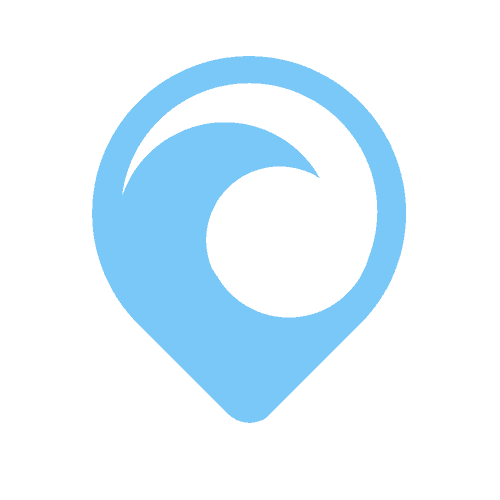 BEGINNERS SURF TRIP GUIDE
BEGINNERS SURF TRIP GUIDE
SURF TRIP GUIDE TO FUERTEVENTURA
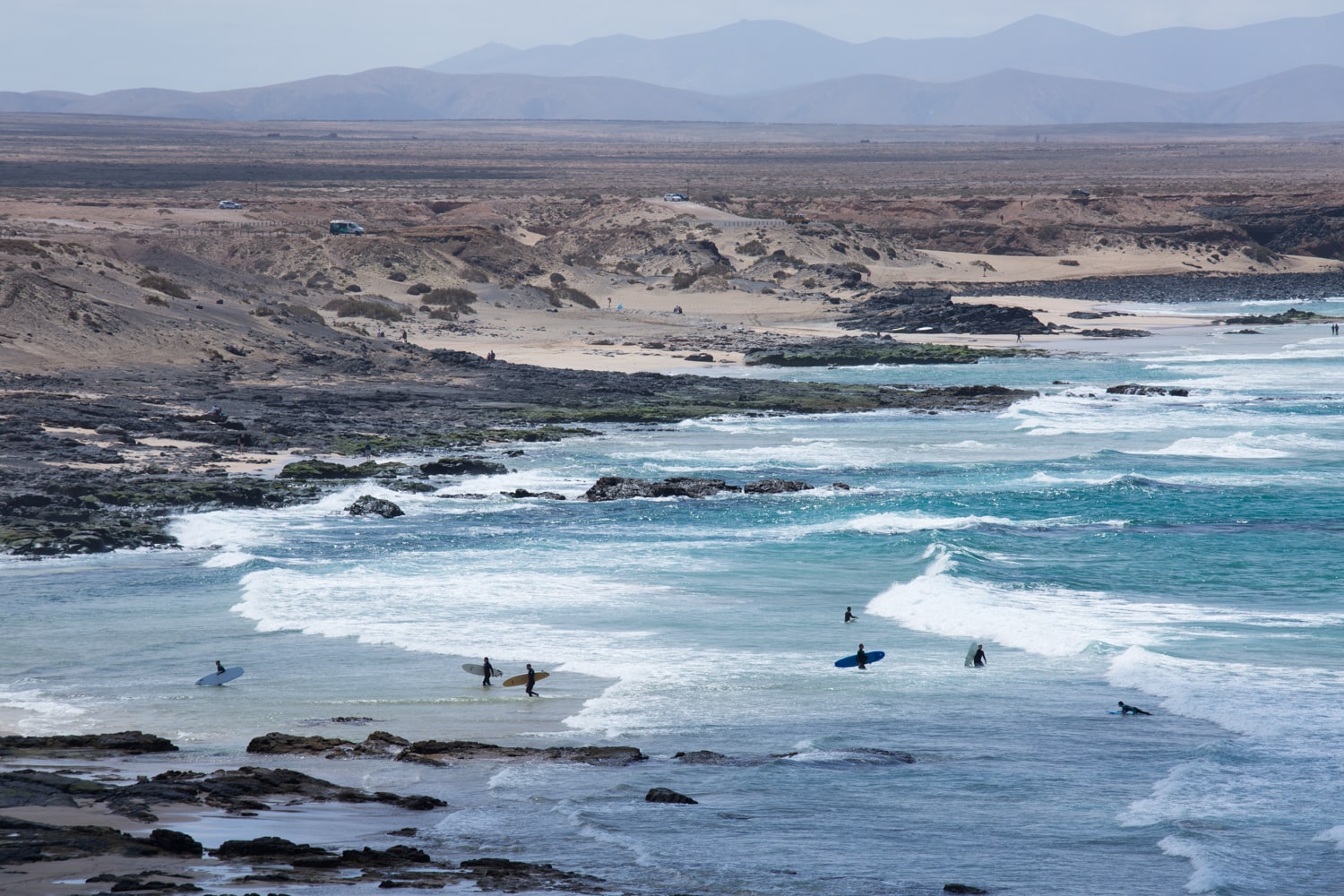
Overview
Fuerteventura is an ideal winter escape and a popular surf destination, with a decent climate all year round it is easy to see why the island appeals to surfing experts and beginners alike If you’re looking to surf Fuerteventura, then you’ve come to the right place.
Our surf guide to Fuerteventura will give you the information you need to plan the perfect trip to this surfing hotspot.
QUICK FACTS
Population – 103,167 (2009)
Coastline – 340km
Airport Code – FUE
Time Zone – UTC/GMT
Currency – Euro
Contents
- Plenty of surf for all levels
- Superb wave quality
- Warm all year around
Surfing Fuerteventura – Cons
- Can get crowded at some surf spots
- Some surf localism
Weather
The island has the most sunshine out of all the Canary Islands with very little rainfall, temperatures in winter tend to be fairly high. The weather in Fuerteventura tends to be fairly steady and boasts around 3000 hours of sunshine a year, in mid-summer the island averages 9 hours a day and 6 hours in mid-winter. One of the reasons why we wanted to visit Fuerteventura was because we wanted to escape the grey, cold weather in the UK. Although it was warm and sunny when we visited (we were in Fuerteventura at the end of March) there was also plenty of strong wind for much of trip. This wasn’t a deal breaker it just meant that a jumper was worth taking with us when we went out.
Fuerteventura also lays claim to having the most white sandy beaches out of any of the Canary Islands along with surfing conditionals suitable for all levels. With its favourable climate and number of excellent surfing spots, Fuerteventura is worthy of its nickname as the “Hawaii of Europe”.
Money
ATMs
Fuerteventura’s currency is the Euro and you’ll find numerous ATM machines as well as foreign exchange facilities around the island, especially in the bigger towns like Corralejo.
The easiest way to take cash out and pay for things is with a debit/credit card. As always, it’s a good idea to have some extra cash with you in the event of an emergency.
Tipping
It’s polite to tip at least modestly in Fuerteventurea but not obligatory, your best bet is to leave some small change behind after your meal. If you think the service was particularly good than it’s worth leaving a few Euros to show your appreciation, 5% is usually fine and 10% is generous. Workers in the service industry don’t make a huge amount of money so tipping goes a long way to help boost their income even if only a little.
If you’re dining in more up market restaurants that expect to tip around 10%.
With other services such as hotel porters, a Euro should be fine and taxi drivers will be happy with any rounding up.
Costs
Here are some rough costs that we found on our visit to Fuerteventura, hopefully they may help you plan your own trip.
Flights
London – Fuerteventura (Return)
- Cheap deal – £70
- Average – £160
Hotel
- £33 (€ 37) / day
Airbnb
- £44 (€50) / day
Car Hire – Click to Book
- £27 (€30) / day for small car with excess insurance cover
Food
- Eating Out – £7 – £11 (€8 – €12.50)
- Beer – £1.32 (€1.50)
- Coffee – £0.88 (€1)
Surf Lesson
- £40 – £48 (€45 -€55) per lesson
Board Rental
- £9 – £17 (€10 – €20) / day
- £44 – £70 (€50 – €80) / week
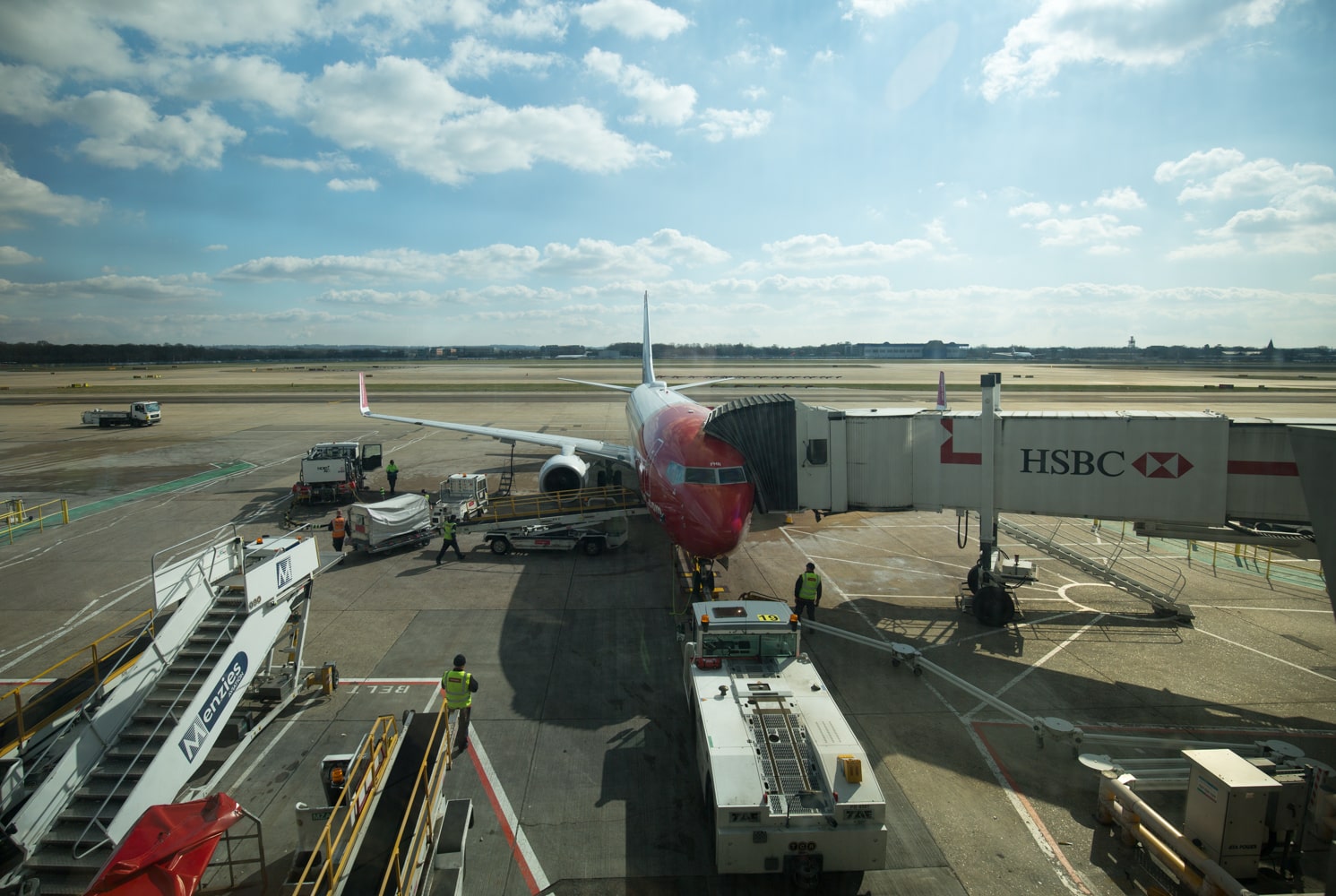
Flights to Fuerteventura
Fuerteventura is almost spoilt for choice with flights from around Europe. Easyjet, Ryanair, Thomson, Norwegian, Flythomascook all have flights scheduled from many of the UK’s main airports (excluding London City Airport). It’s only a 4 and a half hour flight from the UK too!
We flew to Fuerteventura with Norweigian Airlines (they have free WiFi!) from London Gatwick and back to London Stansted with Ryanair, it cost us around £120 each.
London > FUE
- Cheap deal: £70
- Average: £160
Fuerteventura Airport
Fuerteventura Airport (FUE) is also known as El Matorral Airport locally. The airport is made up of one terminal building spread cross two floors with the ground floor split into two sections, one for arrivals and the other for departures.
There are plenty of cafes and shops airside of the airport (for when you’re heading home), including Burger King, clothes shops, news agents and cafes serving decent sandwiches. We sat one of the cafes with a coffee and sandwich in preparation for the 4 hour Ryanair flight back to London.
If you’ve just landed and looking to rent a car or already have before you land, the car rental desks are on your left hand side as you come through arrivals. You can reach the rental cars exiting further down past the rental car desks on the right and crossing the road. The cars are parked in numbered bays with sign posts for the different car rental companies.
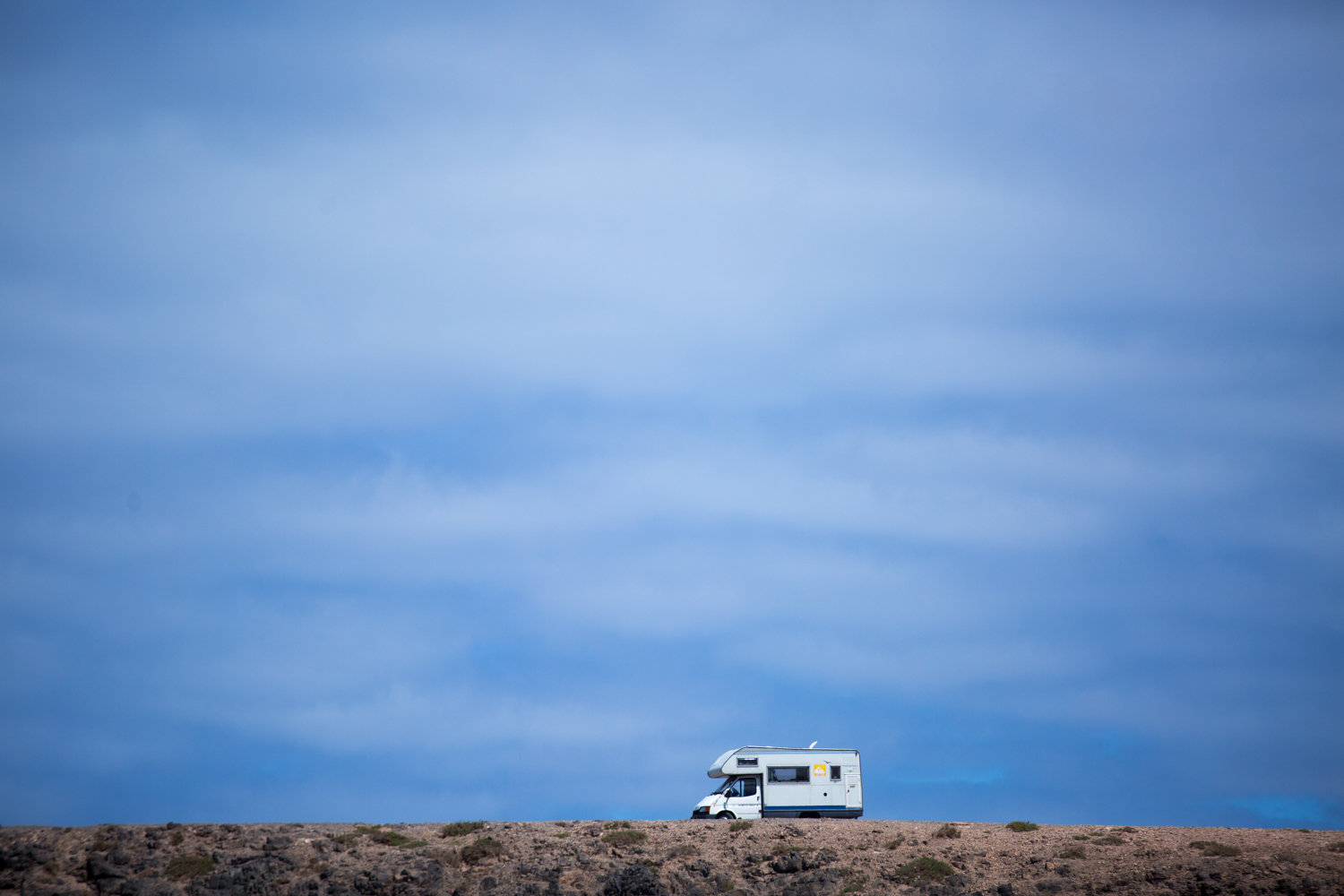 Camper van/mobile homes give your that extra flexibility to explore Fuerteventura
Camper van/mobile homes give your that extra flexibility to explore FuerteventuraGetting Around Fuerteventura
If you’re looking to explore the island your best bet is to rent a car (or camper van / motor home if you’re feeling adventurous). Fuerteventura is around 60 miles in length and 18 miles across, so it’s easy enough to drive across the island and back in a day trip. You’ll find car hire (with well known rental agencies such as Hertz, Budget, Europcar and Avis) at the airport on arrival and it’s worth booking in advance of your trip to ensure your vehicle is available. It’s fairly easy to find a spot to park your rental car around the island and it is usually free.
Fuerteventura is also the perfect place to rent an RV/camper van. The under developed coastline and the number of designated areas to camp means that having a camper van gives you the ultimate freedom to explore the island.
Car Rental
We hired a small 3-door Fiat 500 Mini from Hertz, booking online before we arrived. Although the car was pretty much bottom of the range Fuerteventura isn’t that big so for the most part a small car was fine, occasionally it struggled with speed up highs but nothing too drastic. We also drove down plenty of dirt track roads and roads with big pot holes in the National Park, as long as you go fairly slow on bad roads you’ll be fine. If you have more of a budget and want to get off the road a little then you could consider a 4×4 vehicle.
It’s wise to book further in advance in peak season to make sure you get the best value/model of car you want.
Our car rental cost around ~ £210 for 8 days (~ £26 a day), including payment to waiver the excess in case our car got damaged or stolen. That works out around £26 a day, which is pretty good if you ask me.
There are a number of petrol stations just on the motorway from the airport if you need to top up the tank as well as one at a small roundabout just after you turn off for the airport and into the car rental parking.
Taxis
Taxis are also available in the larger towns on the island but can’t be booked in advance. They tend to be fairly cheap and easy to find, but can’t be booked in advance.
Buses
There is also a bus service but it tends to be fairly slow and only run between major towns, so not a great option for getting off the beaten track.
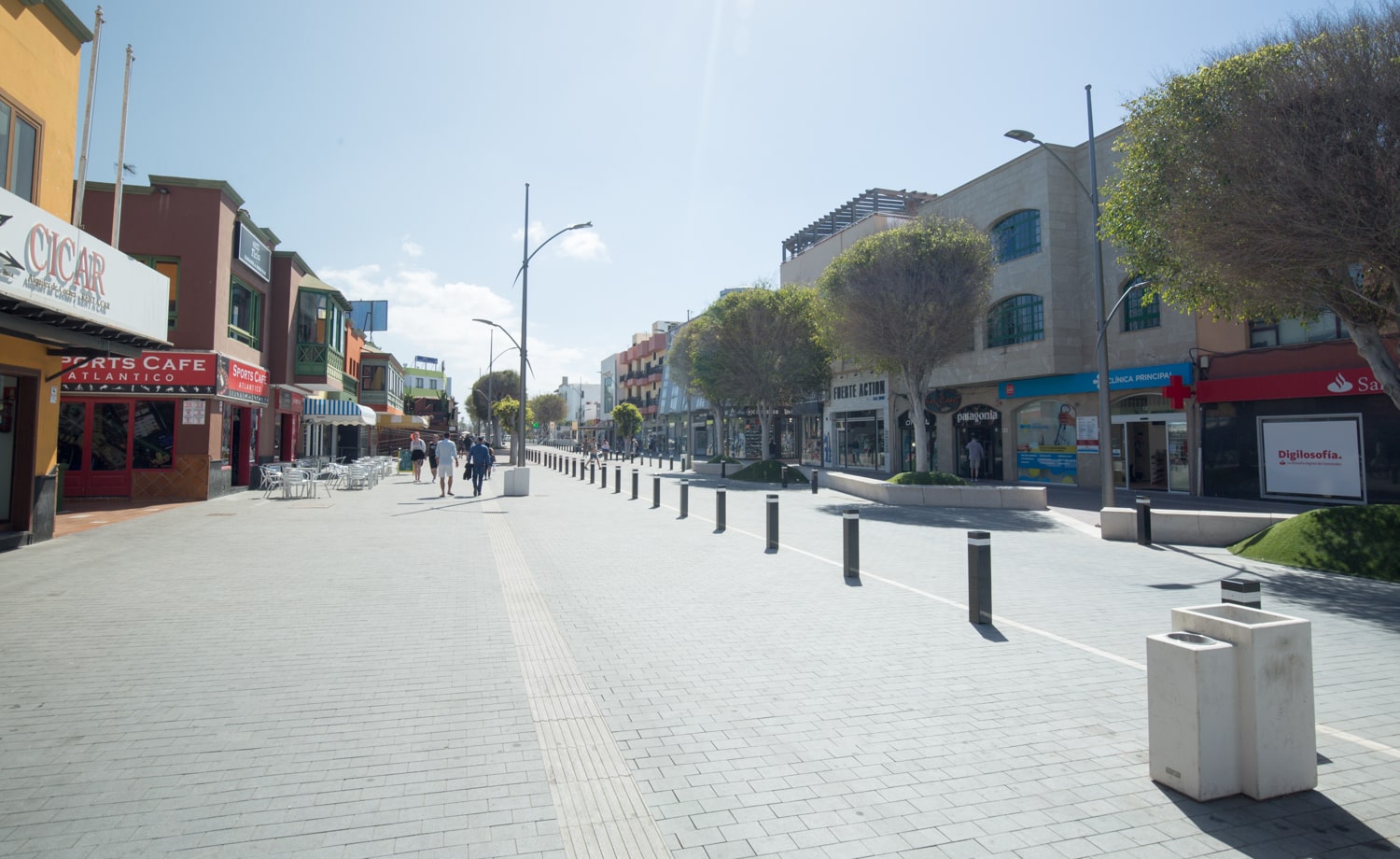
Corralejo
Situated on the north east of Fuerteventura and a 40 minute drive from the airport is the most popular holiday destination and surf town on the island, Corralejo. The town is a mix of the modern and tradition with its Main Street packed full of shops and restaurants. Along the coastline you’ll find the harbour and beaches with cafes and places to eat.
Corralejo’s old town features the old harbour that’s still in use by local fisherman. If you’re looking to explore the rest of the island by boat or even take a ferry to Lanzarote or Lobos head to the modern marina.
As well as being a surfing hotspot you can also try kite surfing and wind surfing here thanks to the windy climate.
For more, check out our surf guide to Corralejo.
Surf
Corralejo is a popular base in Fuerteventura for those seeking the perfect waves. It’s within easy reach of the beaches in the dunes of El Burro (Glass Beach) and Flag Beach as well as Rocky Point and for the advanced surfers, El Hierro is just a short drive away.
Book your surf lessons here.
Unwind – Yoga
With beautiful beaches, sand dunes and volcanoes looming over the horizon Corralejo is a perfect spot for unwinding and finding inspiration. You’ll find plenty of options for practicing yoga in town, including yoga studios, retreats, classes and sessions on the beach.
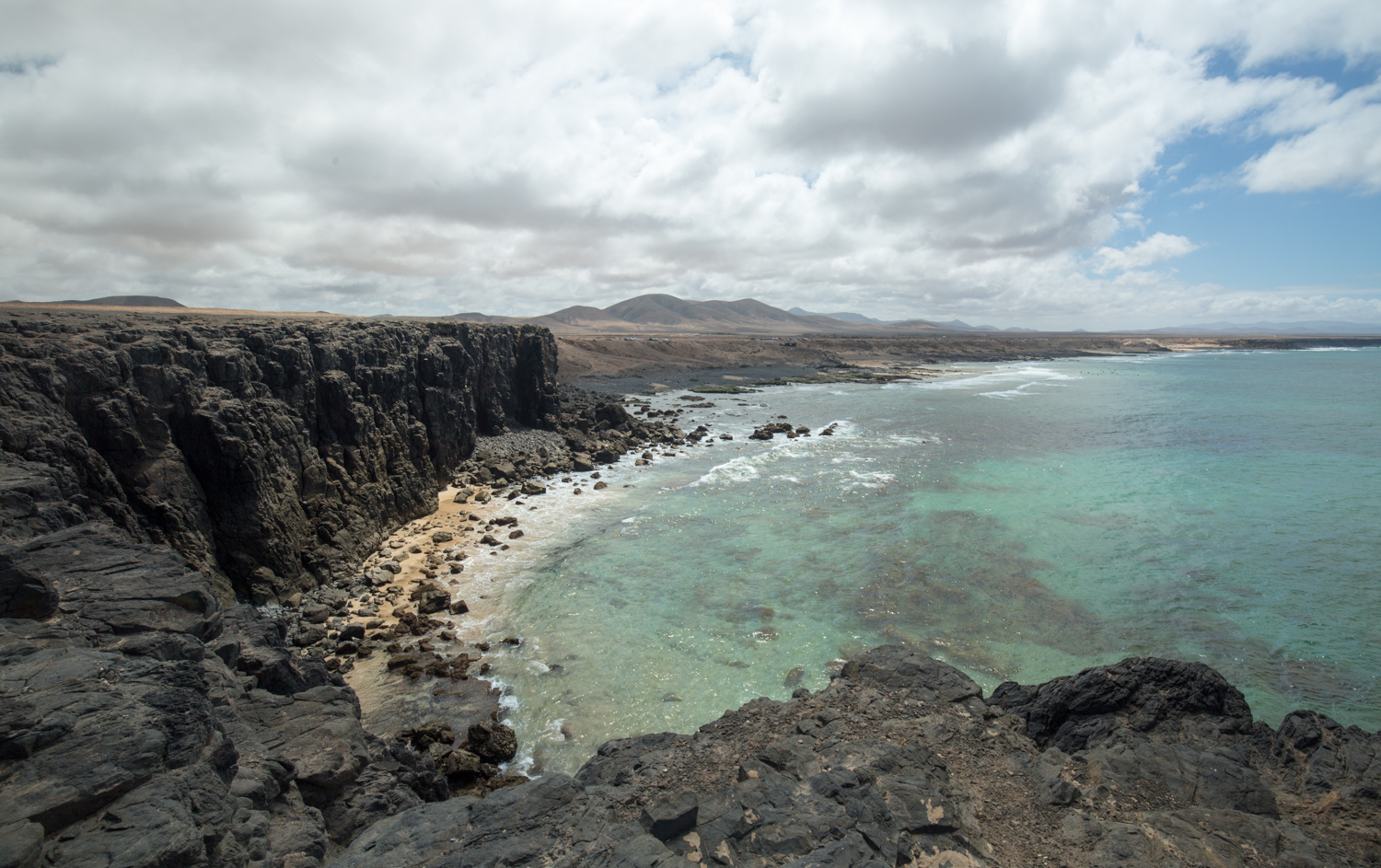 The unspoilt coastline of El-Cotillo, Fuerteventura
The unspoilt coastline of El-Cotillo, FuerteventuraEl Cotillo
On the West coast of Fuerteventura is a sleepy, laid-back wind-swept beach town called El Cotillo. It’s a ramshackled mixture of low-raise buildings with the odd larger hotel complex dotted around the outskirts. It’s a town that hasn’t been overrun with tourism and retains that coastal surfer vibe and streak of independence. There’s a whole host of camper vans dotted around the outskirts of town giving the place a much more of a traveller rather than tourist feel to the place.
It’s only around a 22 minute drive from Corralejo along proper roads on the FV-1, FV-109 and the F-10.
For more, check out our surf guide to El Cotillo.
Surf
There are some pretty perfect surf spots just outside of town away from any development and pretty much unspoilt. There’s great waves for beginners who have had lessons as well as intermediates.
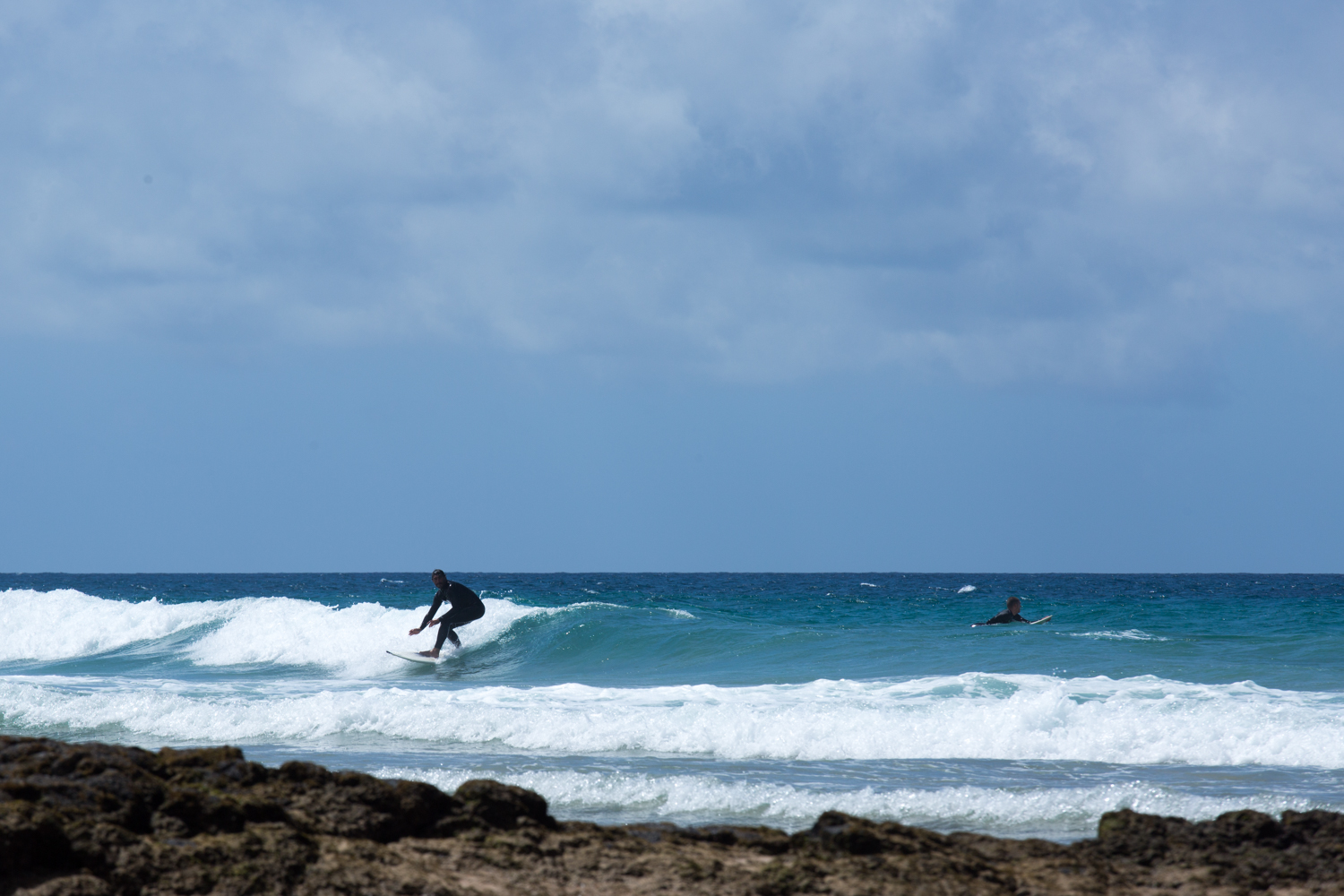 Surfer riding a wave at El Cotillo, Fuerteventura
Surfer riding a wave at El Cotillo, FuerteventuraSurf Spots for Beginners
Our Fuerteventura Surf Guide is focused on beginners and you’ll be pleased to hear there’s plenty of wave options for newbies. If you are just starting out or have had a few lessons before like ourselves, it’s always a good idea to get some more lessons or stay at a surf camp. As a beginner surfer it can be extremely dangerous to surf without prior knowledge of a surf spot. Take a look at the best surf spots in Fuerteventura for a more in-depth list of those surf spots around the island.
Rocky Point, Corralejo
Just outside of the centre Corralejo is a great surf spot for beginners, Rocky point. The wave here breaks over the reef with the right hand wave nearer to the shore than the left. It’s popular spot with beginners so can feel busy at times. The right hand wave is a favourite amongst long boarders when the conditions are right. The main hazard to look out for at Rocky point is the rocky reef bottom and the number of other beginners in the water.
Flag Beach, Corralejo
Flag Beach, also known as the Bajo Negro is around 2 kilometres from Corralejo and is a long sandy beach just beyond the dunes. You’ll find kite surfers and windsurfers as well as surfers along this stretch of water. There’s a small beach bar and kite/windsurfing centre (Flag Beach Windsurf & Kitesurf Centre) where you can hire equipment or take lessons. It’s a beautiful place to surf with turquoise water and a view of Lanzarote and Los Lobos. The left and right have wave break over a sandy bottom with some stones at Flag Beach, surf booties are recommended.
El Cotillo
A great spot to head in summer when the conditions are right for surfers who’ve picked up a bit of experience. There’s a really long sandy beach and you don’t need to paddle far out to catch a wave making it perfect for new surfers. It’s just outside of town where there’s been no development and the beach is pretty wild.
If you’ve parked your vehicle, make sure you don’t leave valuables in the car/van or on display as we’ve been told that thieves sometimes target visitors to the beach.
Avoid in winter if you’re new to surfing as the sandy bottom gets washed out and the waves are currents are powerful.
Playa Blanca
Close to Puerto del Rosario (and the airport) and close to the FV-2 motorway, Playa Blanca is good beach when you’re just starting to learn to surf. The waves tend to be pretty good without being overly powerful like many other spots around Fuerteventura. Although it’s location isn’t as picturesque as some spots, it’s worth visiting to get your surfing basics and as a result you may see a fair few surf schools teaching along the beach.
More Advanced Surf Spots
More advanced surf spots should only be tried by experienced surfers and with caution. Beginners should avoid.
El Hierro, Corralejo
Experienced/Advanced Surfers only
The most famous surfing spot in Fuerteventura is a short drive down a dirt track road from Majanicho beach, it’s known for the reliability of its waves and as a result is one of the busier surfing spots on the island. Two main peaks break over the volcanic reef seven metres underneath the water so you’ve got a few metres of water protection. To get to the beach you can follow the dirt track that runs towards the centre of Corralejo.
If you don’t fancy taking the dirt track in your vehicle you can take Calle la Cancela just off the FV-109, the road surface is good but you do have to drive along the dirt track roads at Majanicho and parallel to the coastline to reach El Hierro beach.
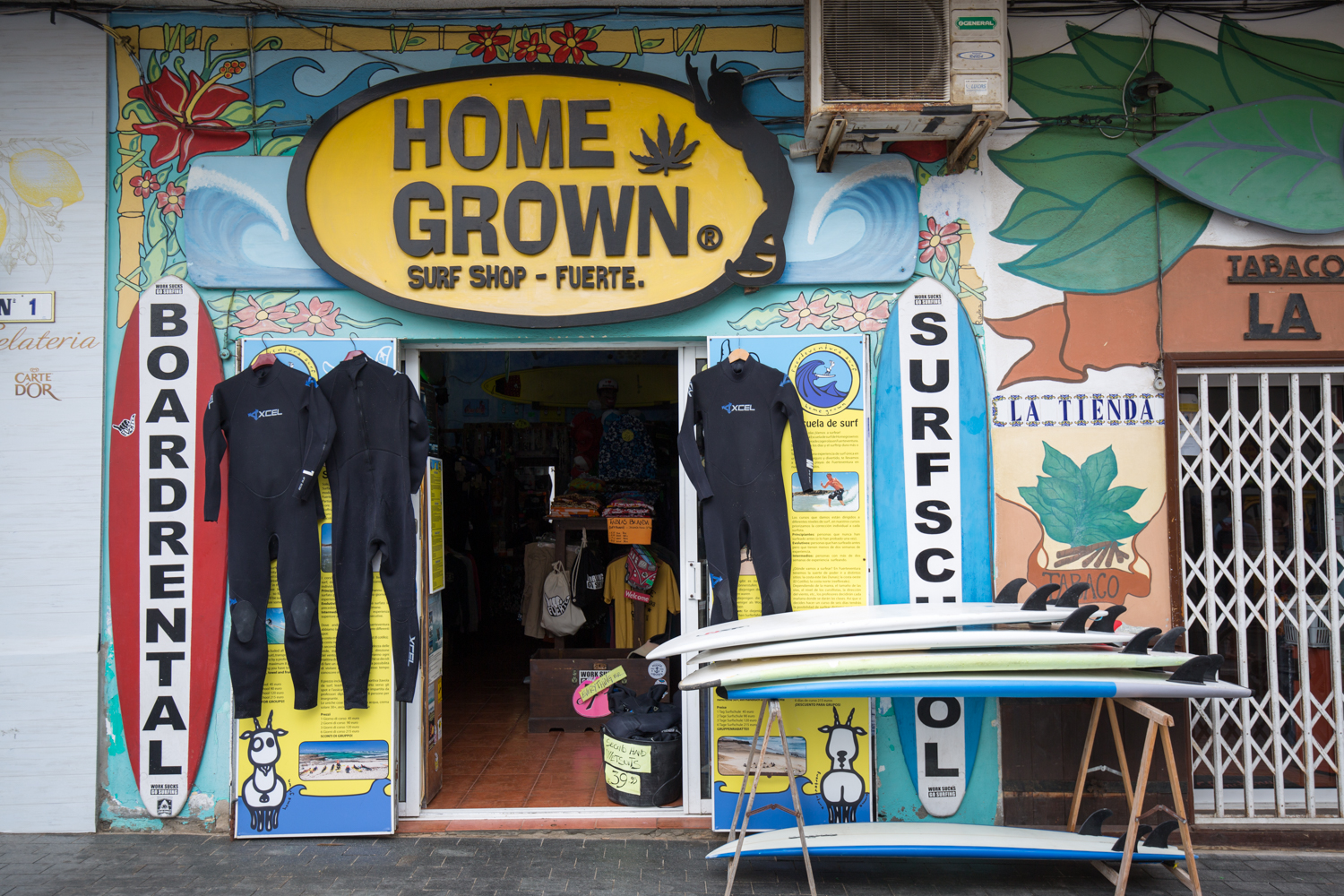 Home Grown surf shop, Corralejo, Fuerteventura
Home Grown surf shop, Corralejo, FuerteventuraFuerteventura Surf Camps
If you’re new to surfing or you haven’t much surf experience it’s pretty critical that you take some lessons. Not only are different surf spots unpredictable but if you don’t have the experience or local knowledge of the surf it can be very dangerous. Book a lesson or even sign up to a surf camp if you want to make real progress. Thankfully, Fuerteventura has plenty of surf camp options to choose from.
Billabong Surf Camp & School “Beach House”
Surf Camp & School
Located on Waikiki beach Billabong Surf Camp has a pretty good location, close to the water but also central enough to have everything pretty much on your doorstep.
Planet Surfcamps
Surf Camp & School
Book accommodation: Planet Surfcamps
Located just south of the main streets of Corralejo, Planet Surfcamp is about 200 metres from the beach and 500 metres from the surf spot they use from lessons.
Wave Rider Surf School
This rustic surf villa is located right on the beach with beautiful ocean views. It’s just a short walk from the centre of Corralejo too.
Homegrown
Surf Surfshop, Surfschool & Surfcamp
Located in Corralejo, Homegrown offers three different accommodation options, a hostel, apartments or a hotel. As well as the accommodation they offer all the range of surf lesson options and activities.
Surf Therapy Surf Camp & Surf School
Surf Surfshop, Surfschool & Surfcamp
Book accommodation: Surf Therapy
Surf Therapy has a cosy, small but with everything you need surf house with surf equipment and lessons available.
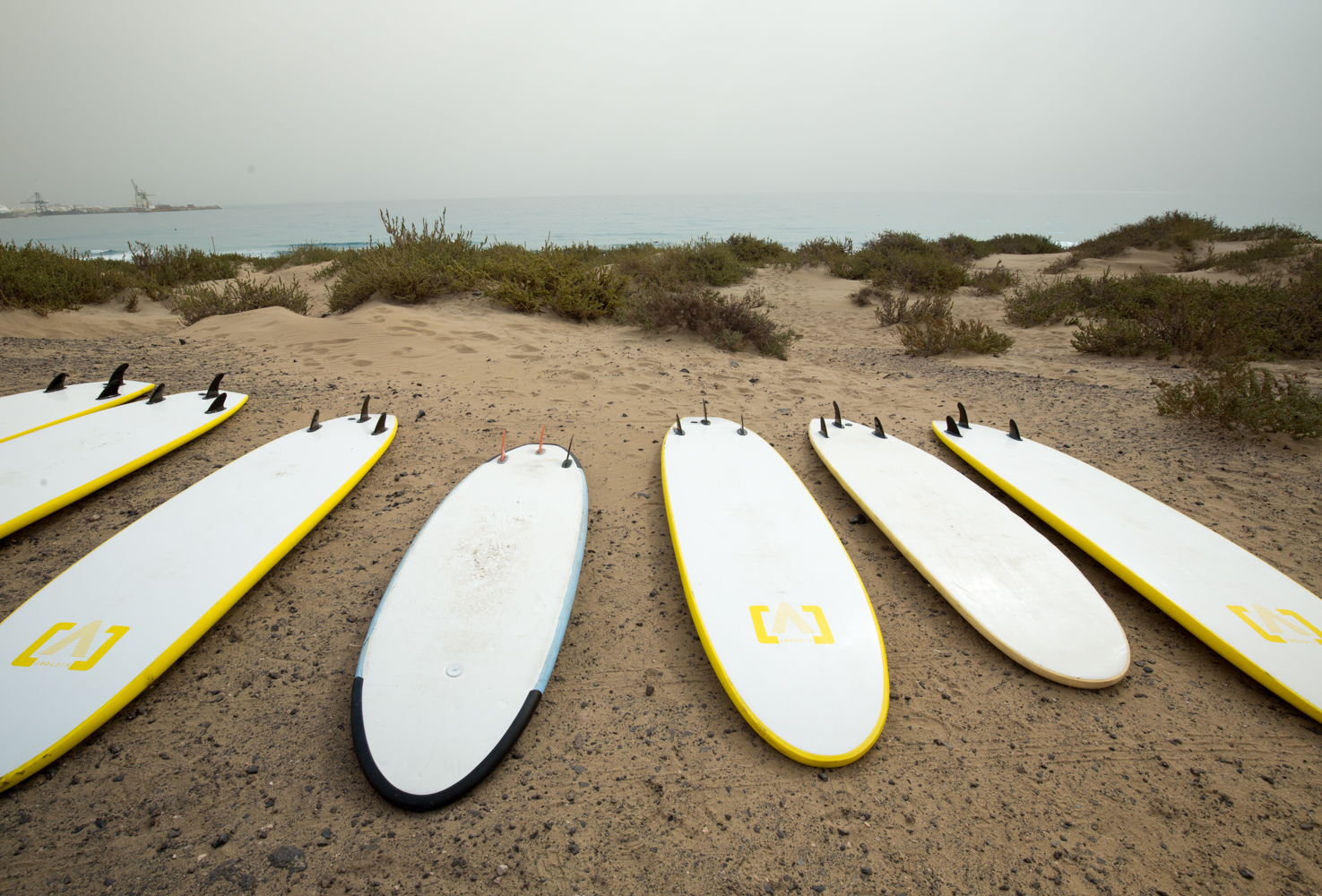
Fuerteventura Surfing Tips
Get some lessons
If you’re a complete beginner it’s critical that you get some help, guidance and instruction from someone who knows the local surf conditions and variables.
Surf instructors will run through the basics of surf technique on the beach before you even entered the water.
Rent a soft surfboard
If you’re a beginner the best option is to rent a soft surfboard (also called “a foamie”, “foam boards”), they are constructed with new surfers in mind. The soft constuction of these boards are designed to minimise any possible injury to the surfer or other surfers in the water. These boards are also designed to help new surfers to progress as quick as possible and tend to be more forgiving in the water.
Right Gear, Right Attitude
Make sure you bring the right gear, right board, wetsuit and boots (if needed) and the right attitude. Always respect the water and know the basics of surfing and basic surf rules before you head out, Fuerteventura has some heavy surf. When there’s many surfers wait to catch the same wave the surfer closest to the curl has the right of way.
Watch the Wind
Fuerteventura can get very windy and the surf can get quite erratic. Check the conditions and if they aren’t favourable you can look for an appropriate surf spot on the opposite side of the island.
So that’s a wrap for our surf trip guide to Fuerteventura. It’s a awesome surf destination with all year round sunshine, plenty of surf camps, shops and places to unwind. If you have any comments, questions or there’s anything you think we’ve missed, we’d love to hear from you -> info@surfandunwind.com.
Pin for later!